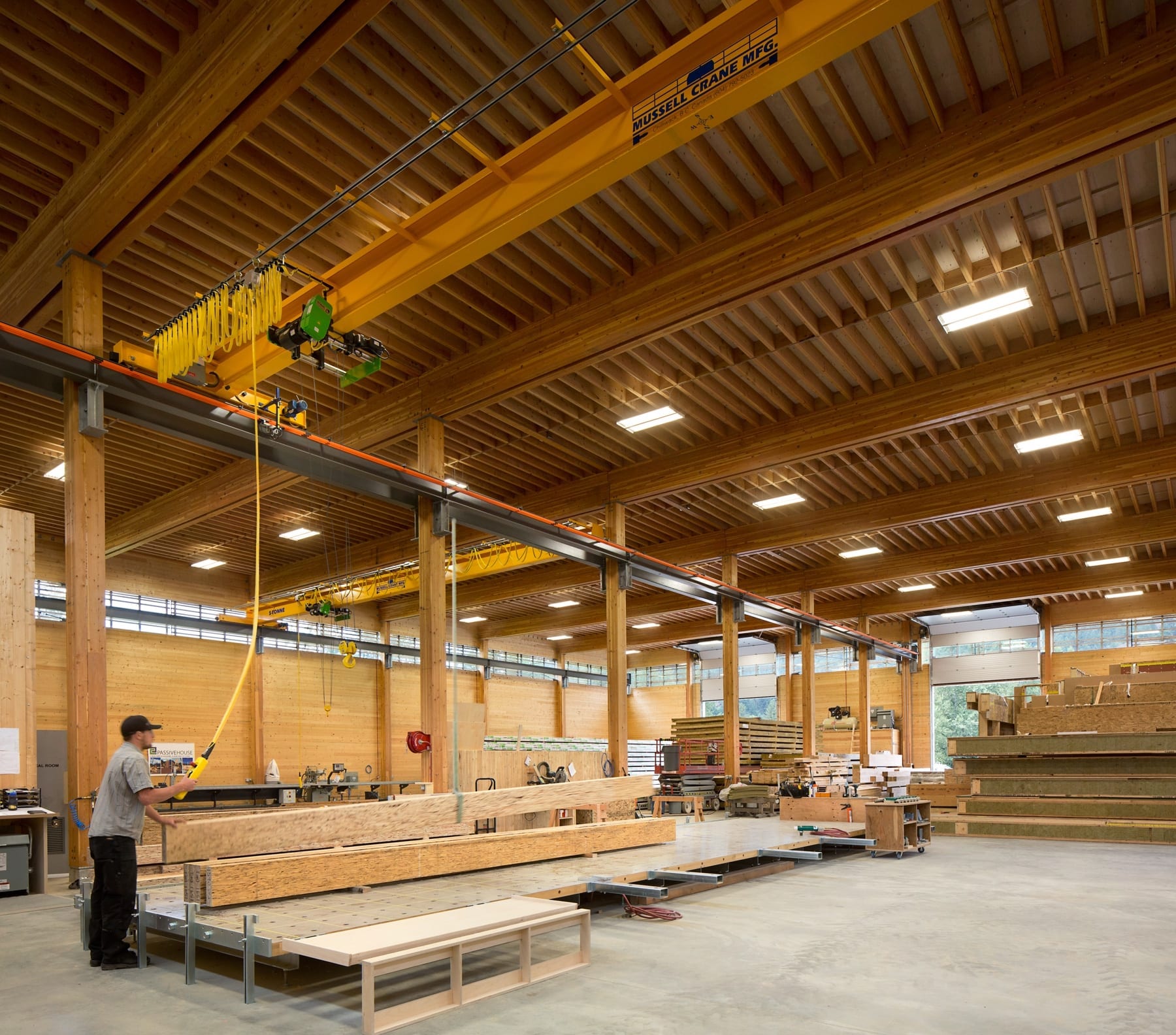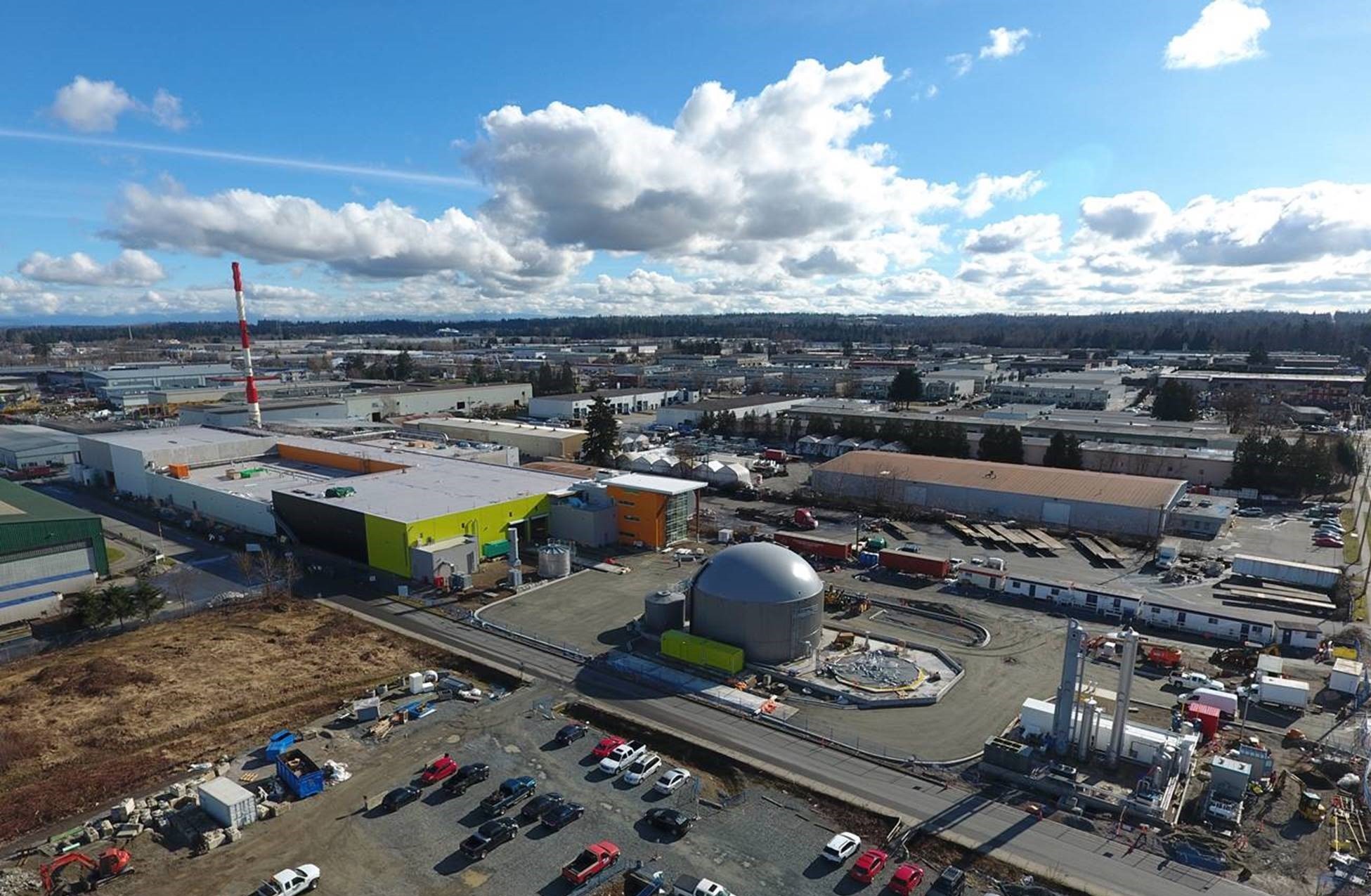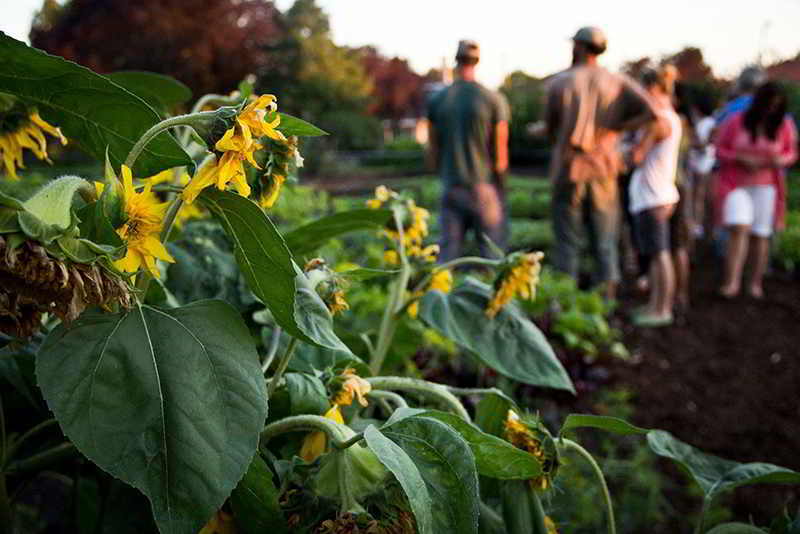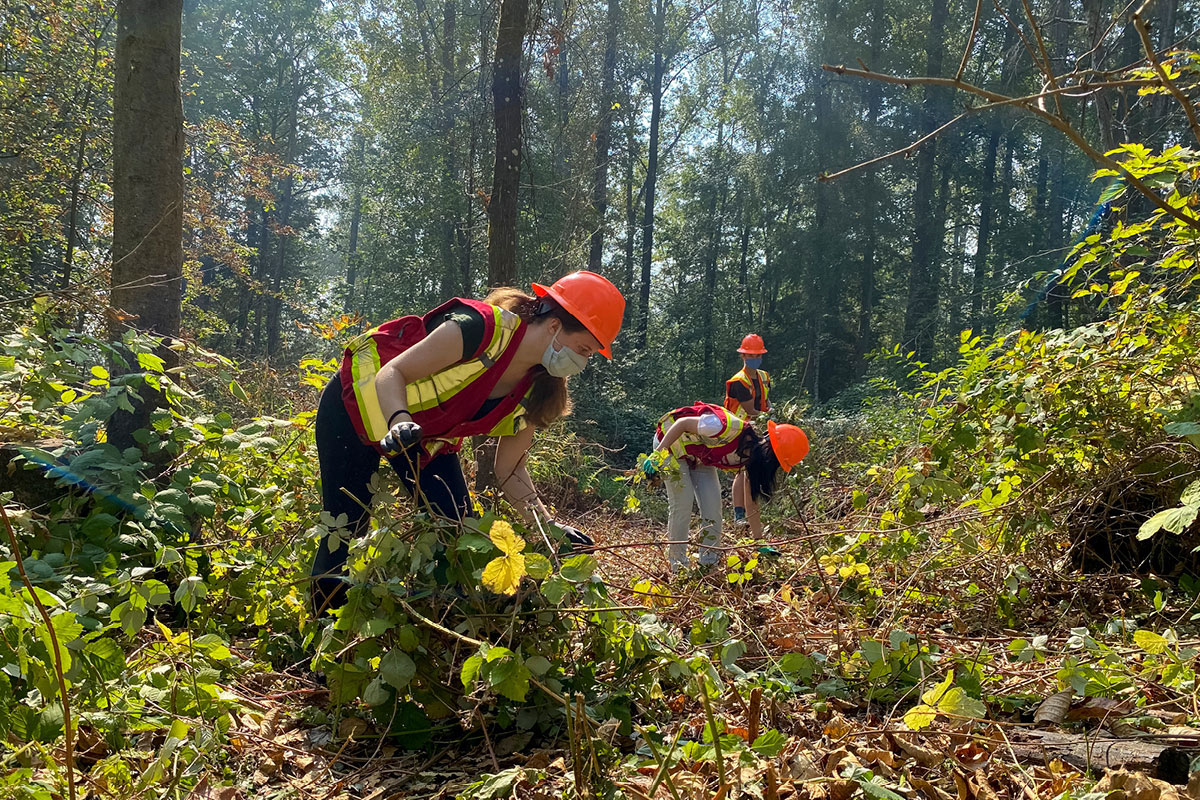This story is part of the series Getting to Zero: Decarbonizing Cascadia, which explores the path to low-carbon energy for British Columbia, Washington, and Oregon. This project is produced in partnership with InvestigateWest and other media outlets and is supported in part by the Fund for Investigative Journalism.
If any bioregion is well-suited to streak towards a net-zero carbon emissions economy, it would seem to be Cascadia. British Columbia, Washington and Oregon set some of North America’s first mandates to reduce greenhouse-gas emissions over a decade ago. Abundant hydropower provides an edge, and most voters in all three places say they want to transition away from fossil fuels.
Getting to zero of course would require heavy political lifting. Progress so far has come in fits and starts. But if the climate crisis is to be averted, greenhouse-gas emissions must be dramatically reduced. And Dr. Jennie Moore, who directs British Columbia Institute of Technology’s Institute Sustainability, points out that would bring big changes to the world of work.
So, The Tyee asked a dozen experts the question: What are some top jobs we can expect in a net-zero emissions economy in B.C. and, by extension, Cascadia? Everyone uses their hands, head and heart to do their jobs well. Still, we took what we heard and divided our list of into three broad categories.
Hands: Technicians and carpenters, people able to roll up their sleeves who unafraid of getting their hands dirty.
Heads: Environmental accountants and engineers who can brainstorm non-traditional fuel sources — the numbers people.
Hearts: Those with a desire to improve how we live, farm or shop can change the way things are done.
Here are some key jobs for a net-zero carbon emissions future economy that may be around the corner.
Using our hands
1. Assembly-line home fabricator
To slash emissions, we’re going to have to dramatically change how we build new homes. The days of individually constructing homes piece by piece are over — but this could be a good thing for the province’s forestry industry, says Alex Boston, executive director of Renewable Cities and fellow at the Morris J. Wosk Centre for Dialogue at Simon Fraser University.
Boston proposes building homes on assembly lines where companies can better manage cost, quality and waste. Walls, floors and other sections of a home could be assembled in a factory — down to the insulation and wiring — and then shipped and pieced together like Lego blocks.
Low quality B.C. lumber, such as smaller trees or branches, could be made into mass timber, a fabricated material that layers and laminates wood fiber that is comparable to concrete in strength, Boston says. Mass timber and pre-fab could be used to build efficient commercial, residential and institutional buildings while maintaining an industry for sustainably harvested lumber.
Passive Houses are intentionally designed to reduce emissions and could easily be mass produced on an assembly line, Boston says.

But let’s go a step further and imagine mass producing active houses, which not only reduce emissions but also have a net-positive effect on the environment and people. House-building assembly lines will shrink the number of some kinds of construction jobs, but Canada’s workforce is shrinking, too, Boston notes. And there is potential for big growth in greener construction — see our next example.
2. Home energy auditor and retrofitter
Don’t go rushing to bulldoze current buildings to build greener ones, Boston cautions, because the greenest home is the one that’s already been built.
But older homes don’t pass the mustard when it comes to energy efficiency and there’s a big market for auditors who can map out those inefficiencies and help home owners or building managers improve their energy use. A 2017 Columbia Institute report says retrofitting buildings will create two million construction jobs by 2050 — so get ahead of the curve, specialize and start handing out business cards.
Building retrofits is currently done by many tradespeople, like plumbers installing energy efficient washer and dryers; electricians installing smart thermostats; and by contractors choosing better insulating windows and doors.
3. Marine retrofitter
Cars can be run off electricity, so why stop there? Retrofitting freighters and tankers to be run off of batteries, or to be hybrid engines, will reduce emissions and noise pollution, Boston says.
Corvus Energy is a B.C. homegrown success story for retrofitting ships with batteries, but most of their business happens in Scandinavian countries, Boston says. That’s due to Scandinavian regulations that protect entire marine areas from fuel-burning engines, so ships have to use alternative energy sources to navigate those waters, he says. If Scandinavia can do it, why shouldn’t we be trying something similar in our local waters?
We should also change how we access BC Ferries, Boston adds. To travel from Vancouver to Victoria we first have to drive out of town and then drive on a ship run off of fossil fuels. Adding an electric ferry than ran passenger sailings between downtown Gibsons and downtown Vancouver, for example, would reduce emissions and congestion while reducing the demand for noisier, more polluting sailings on other BC Ferries.
4. Electric vehicle technician
Clean Energy Canada says the green transportation sector is going to be one of the largest green sectors over the next decade. The Columbia Institute’s report predicts Canada will spend $150 billion building urban transit infrastructure like rapid transit, subway tunnels and dedicated bus lanes between 2017 and 2050, creating 245,000 construction jobs.
Quebec and Ontario will likely remain provincial leaders in electric vehicle manufacturing but there will be a lot of chances for B.C. to contribute to the sector, says Joanna Kyriazis, Clean Energy Canada senior policy advisor. She points to the previously-mentioned Corvus Energy, which helps retrofit ships with battery power, and Portable Electric, a Vancouver-based company specializing in portable batteries to replace diesel generators at festivals, or after natural disasters.
That means lots of work for technicians specializing in electric vehicles. But the electric car boom comes with a large caveat. We can’t electrify our way out of the climate crisis.
To get to a zero-carbon world we need to restructure our cities so we don’t drive — period, says BCIT’s Moore, who argues we need to embrace the reality that our current rate of economic growth is unsustainable. Everything from buses to bikes has to be made somewhere, usually burning fossil fuels along the way, so it’s best to aim for walkable cities over all else.
Being able to walk to your butcher, your baker and your cappuccino maker makes people less reliant on cars, which are surging in ownership per capita in B.C., says Boston. B.C.’s population has increased 18% while car ownership had jumped 34% since 2007, he says. That’s due to the province favoring vehicle-centric growth, and because people are transitioning from multi-person to single-person homes, which makes sharing a car less likely.
Using our heads
5. Environmental engineer specializing in non-traditional fuel sources
We’ve all heard of harnessing power from the sun or wind, but what about garbage, poop or animal carcasses? A 2019 Clean Energy Canada report predicts the waste-to-fuel industry will increase seven times faster than the rest of the country’s economy over the next decade.
Vancouver’s False Creek neighborhood already heats 534,000 square meters of residential, commercial and institutional spaces by harnessing heat generated by local sewage.
Poop does more than produce heat. Waste generated by one million people could run the Parkland oil refinery in B.C. for one whole day, SFU’s Boston says. Poop is fuel, which is why the refinery is working on a plan to run biosolids to its facility over the next couple years, he says.
Boston credits this innovation to B.C.’s low-carbon fuel standard, which requires fuel to reduce its carbon intensity.
The City of Surrey’s biofuel facility turns the city’s organic waste into compost and fuel for its waste trucks, which then go out and collect more food scraps. The methane released during the composting process is turned into fuel. The amount of biofuel produced is limited to the amount of organic waste produced in the area, but that doesn’t mean there isn’t more innovative fuel sources to be found.

Quebec farmers are turning cow poop into power and a Quebec company is collecting trash that can’t be recycled or composted and turning it into fuel.
6. Emissions auditor
Net-zero isn’t some fanciful future dream that looks like the Jetsons — take it from a small business that’s on track to becoming the first of its kind to hit net-zero within the next decade.
Platinum Pro-Claim Restoration in Richmond has been operating since the early 1990s, employs 170 people, has a fleet of 90 cars and takes on around 1,750 home and building restoration projects annually, explains Jamie Madill, CFO and director of sustainability.
The company has always been environmentally conscious but decided to target its emissions back in 2016 after moving into a larger warehouse, Madill says. To do that they partnered with Climate Smart, a company that specializes in reducing carbon emissions by first mapping emissions and then creating solutions to reduce them.
Climate Smart’s training can be taken on by anyone on the team, but it works best if you find people in accounting and operations who are passionate about the environment and invite them to participate, Madill says. That means they’ll already be familiar with things like hydro bills and inventory. Training takes around 30 hours spread over three months, Madill says.
Platinum Pro-Claim Restoration has since introduced 18 electric vehicles to the fleet, built public vehicle charging stations at its office, cut power costs by changing to LED lights, improving warehouse insulation and created 14 different waste streams to divert material from the landfill.
That adds up to over $120,000 in fuel savings since 2016, and that number jumps every time the company adds another electric vehicle, Madill says.
Transitioning a business might take some extra upfront costs, but once the infrastructure is in place it’s self-sustaining and companies will see a reduction in costs while saving money, he says.
Mapping company emissions and creating a plan to get to net-zero is something every small to medium Canadian business can do, he adds.
7. Environmental accountant
The phrase “green jobs” might bring to mind more millennials working at a tech startup involving windmills and less the numbers nerds with their calculators, but accountants are vital when it comes to a net-zero economy, BCIT’s Moore says.
Canada’s economy will never transition towards net-zero emissions if we continue underpricing carbon, Moore says. Accountants are vital to help the public and government understand the true cost of carbon, which is wildly different than the price we currently pay, she notes. Environmental accountants would specialize in calculating the costs of pollution and the benefits of going green.
Some B.C. municipalities are already starting to measure their natural resources through an emissions lens. For example, the West Vancouver city council has started to track how much carbon its trees can store, as well as how pretty they are or how much shade they give off, Moore says.
Following our hearts
The zero-net emissions jobs of the future favor those with a love of nature and a heart open to imagining a very different world, noted various experts we talked to. Asked to paint a possible picture of a world transformed by a radical reduction in greenhouse gas emissions, BCIT’s Moore says we can still live well — but we’ll have to travel less, enjoy our own neighborhoods more and reexamine much of what we take for granted. Instead of hopping in our air-conditioned cars to drive to the beach on a hot summer day, we’ll walk through our neighborhood community garden to reach the entrance to a literal underground movie theatre — built below ground so it’s always cool and dark.
8. Wilderness restorer
“We need to re-wild a lot of Earth’s surface,” says Moore. Human impact is everywhere — while cities take up around 1% of the planet, logging and agriculture take up 70%, she says. Mass plant and animal extinctions are happening because only 30% is wilderness.
If we’re going to shift to a low carbon emissions economy and stabilize our climate we need to pull back on human expansion and help native plants and animals reclaim their habitat. Ecological restoration skills will be in high demand, Moore says.
Jobs in this field can already be found in salmon stream restoration. For the ongoing restoration of the Kennedy Falls watershed and its Chinook salmon, restoration required a complex understanding of the region’s historical Indigenous stewardship and the impacts of modern industrial logging and development.
9. Agroecology farmer
Shipping food is incredibly carbon intensive, so we have to radically shift where and how we produce food, says Moore. Buh-bye golf courses and hello neighborhood farms. But don’t expect to see high-rise vertical farms because they’re energy intensive, Moore says.
To cut carbon we also need to look beyond sustainable farming practices or organic and reach for a new standard known as agroecology, which works to improve the relationship between plants, animals, humans and the environment. B.C. organic fruit farmers and ranchers practice agroecology when they allow wildflower cover crops to flourish, or use chickens to control pests.

Canada’s agricultural industry is unlikely to hit zero emissions but near zero is possible, according to a March 2021 report from the National Farmers Union. The report calls for electric tractors, crop biodiversity and federal programs that return unproductive farmland to grassland, wetland, riparian area, tree rows, bluffs and forests.
10. Circular economy retailer
We need to change a lot about how we make, use and waste things, Moore says. To start, we need to slash how much we consume. The planet needs us to reduce our energy use by 90%, she says — and that means we need to stop shopping and start repairing, re-tooling and re-designing what we already have.
This means bending the current take-make-waste system into a circular economy, where the waste from one industry becomes fuel for another industry. This goes beyond recycling and calls on entrepreneurs to look at waste steams as business opportunities for creating entirely new marketable material.
In Surrey, B.C., a company is tackling battery waste and maybe even preventing the construction of future mines. RecycLiCo breaks down lithium batteries and recovers 100% of the lithium, cobalt, magnesium, nickel and aluminum, which can then be fed back into the electronics industry. Building wind turbines requires materials, but that doesn’t mean those materials aren’t already available in landfills if we change how we approach waste.
When asked what a zero-carbon world looks like, BCIT scientist Moore points out that nothing lives in a zero-carbon world except glass sponges. All other life on earth is made up of carbon so no matter what there will be carbon somewhere on the planet, she explained.
But when it comes to what a zero-carbon emissions world looks like, Moore cautions that humans will always need to do things like eat and move around. That means getting to a zero emissions future will be very challenging. In other words, it’s going to take a lot of work — made up of a lot of new kinds of jobs.



